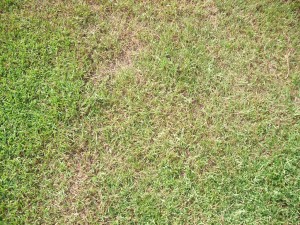Unlike other problems associated with unhealthy lawns such as disease and frost damage, which are to some degree at least beyond the control of the person looking after the lawn, lawn scalping is quite simply down to poor lawn care and maintenance. Here we’ll look at how to avoid falling victim to bad lawn mowing practice that can result in you taking just a little ‘too much off the top’
What is Lawn Scalping?
Lawn scalping is defined by any lawn mowing practice that takes more than a third of the canopy, or ‘exposed’ layer of grass away, in other words taking away the healthy green shoots and leaving nothing more than the pale coloured stem tissue behind. Once the green top layer is removed the grass can no longer use sunlight to produce food and grow, so instead it has to use food reserves stored in its roots. This all results in a weak and unhealthy grass which will take time to recover and of course looks awful in the meantime.
What Are The Effects of Scalping?
 Once the grass is damaged and weakened not only will it take some time before it grows back, but it also leaves it vulnerable to invasion from weeds which can cause further damage to the lawn. Scalped lawns are brown or yellow in appearance, and generally look thin and tired. This damage will be more or less evident depending on the species of grass, for example cold climate grass such as Bluegrass is more sensitive to scalping damage than more rugged varieties such as Bermuda Grass.
Once the grass is damaged and weakened not only will it take some time before it grows back, but it also leaves it vulnerable to invasion from weeds which can cause further damage to the lawn. Scalped lawns are brown or yellow in appearance, and generally look thin and tired. This damage will be more or less evident depending on the species of grass, for example cold climate grass such as Bluegrass is more sensitive to scalping damage than more rugged varieties such as Bermuda Grass.
How to Prevent Scalping
If you’re not too familiar with how your lawn mower performs then it’s worth taking the time to test it out on a small discreet area of grass to see just how much grass it cuts off at a time. Adjust the cutting height to determine the optimum height before proceeding with the rest of the lawn and you shouldn’t go far wrong. Keep an eye out for any bumps or raised areas that might be prone to getting scalped, and stop to adjust the cutting height accordingly before proceeding.
How to Recover From a Scalped Lawn
Again your actions here largely depend on the species, warm climate grasses will often grow back over time under their own steam, so it’s just a case of playing the waiting game with these. Cold climate grasses such as Bluegrass, and Ryegrass may be able to recover on their own, however if the damage is too severe you would do well to reseed these grasses to give them a helping hand. Needless to say once the grass has recovered it is best to stick to the recommended mowing height when cutting the grass to avoid any further damage. Most modern lawn mowers have some degree of cutting height adjustment, with more expensive mowers typically offering a greater range than more basic models.


